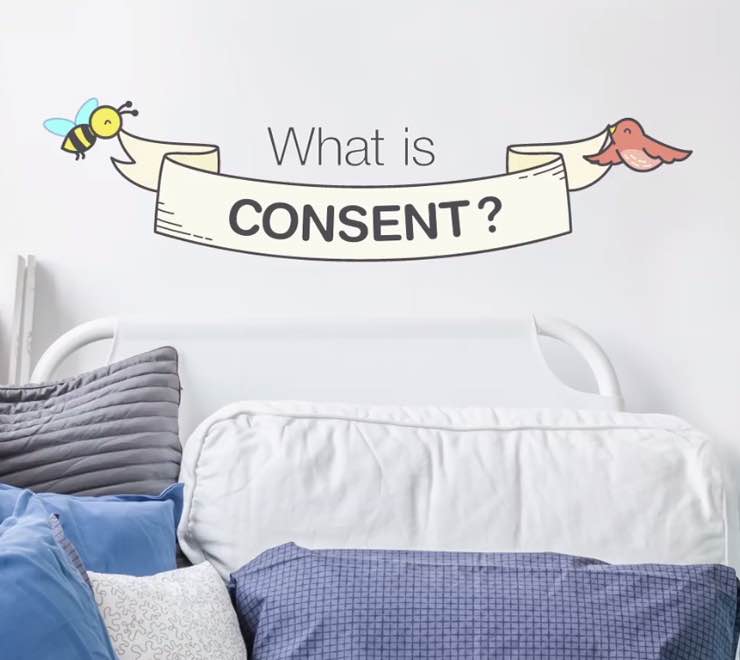Sexual harassment is any unwanted verbal or physical conduct of a sexual nature. It can make you feel embarrassed, offended, intimidated or unsafe and shouldn’t be ignored.
Sexual harassment can take place anywhere, including at school, at work or out in public, so it’s important to recognize the different types of sexual harassment.
Sexual harassment can include:
- inappropriate staring
- telling sexual jokes
- showing or sending unwanted sexual pictures, cartoons or other sexual images (including online)
- demanding hugs, dates or sexual favours
- asking questions or talking about someone’s sexuality, sex life or body
- making unnecessary physical contact, including unwanted touching
- using language that puts someone down on the basis of their gender
- spreading sexual rumours (including online)
- threatening to fire or punish someone if they don’t accept sexual advances (this is known as reprisal)
- stalking (behaviour that makes someone feel unsafe including unwanted visits, phone calls, texts, emails or letters, leaving gifts or watching someone’s home/school)
If you’re being sexually harassed, remember, it’s not your fault. You’re not responsible for the harasser’s behaviour — no matter what. It’s normal to see physical and emotional side effects from the experience including anxiety, depression, fatigue and insomnia as well as relationship or self-esteem problems.
I’m being sexually harassed — what can I do?
You need to know your rights and options for action if you’re experiencing sexual harassment.
If you’re experiencing sexual harassment, here are some things you can do:
1. Get informed
At school: your school may have a sexual harassment or bullying prevention policy, so consider asking someone in the main office about this.
At work: check your workplace policies and procedures manual. It could tell you your options under labour laws and should include who to contact.
2. Keep a record
Write a detailed description of the incident(s) including what happened, where it occurred, when it took place and if there were any witnesses. If you have any text messages or screenshots of the incident(s), keep them saved.
3. Ask them to stop
This can be scary, but confronting people — even adults in positions of authority — can work. If you feel it’s safe to do so, consider telling the person to stop in a calm but firm manner. Here are some ways you can say stop:
- “When you look at me like that, I feel really uncomfortable. I’m asking you to stop it.”
- “I’ve said ‘no’ before when you’ve asked me out, and I’m not going to change my mind. If you don’t stop, I’m going to have to tell the principal (or boss, teacher, etc.) about it.”
- “I’m going to file a report if you touch me (talk to me, say that, etc.) again.”
- “Yes, I do have a sense of humour. But what you’re saying isn’t a joke — it’s sexual harassment. If you don’t stop, I’ll need to speak to our boss (teacher, principal, etc.).”
4. Address it
If you’ve tried speaking to the person and they won’t stop, or if you don’t feel safe or comfortable confronting the person, here are some ways you can report the harassment:
At school: you can report harassment to a teacher, principal, vice-principal or guidance counsellor.
At work: you can report harassment to your supervisor, the human resources/personnel manager (if your workplace has one) or your union (if you belong to one). Your options may be informal (they can talk to the person for you or help you write the person a letter) or formal (a formal complaint and investigation). If your employer does not take action, you could file a complaint with the local human rights commission.
If you choose to report sexual harassment at school or at work, it’s a good idea to:
- ask a friend, co-worker or parent to come with you
- bring any written records with you
- ask how you’ll be protected from retaliation after reporting the harassment
- take notes during the meeting (when it occurred, who was present, the result of the meeting) in case the behaviour continues or you are somehow punished for reporting it
5. Contact emergency services
Some types of sexual harassment are against the law and should be reported to the emergency services in your area. Examples of these situations include:
- threats of physical harm
- actual physical harm
- stalking
- sexual behaviour toward a minor
6. Change your school or job
Changing your school or job should only be considered as a last resort, in instances where you know you’re unsafe or have tried to stop the behaviour with no success.
Feeling forced away from your school, job or neighbourhood is difficult and it’s OK to feel angry, sad or alone. It’s not fair to you because you have done nothing wrong.
If you’ve had to change your life because of sexual harassment, it’s a good idea to get help as you work through your feelings. Try talking to someone you trust, like a friend, family member or co-worker about what you’re going through.















